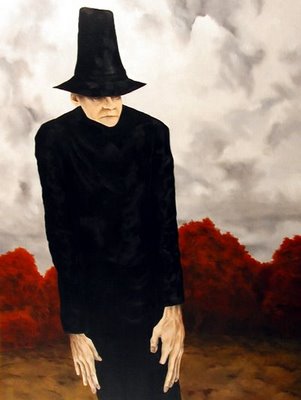
The physicist dreams that a major war is being waged. He wants to send news to his colleagues but his messages are censored. Then a mathematician he knows and trusts appears with his wife. The mathematician says to the scientist, clearly and firmly, “Cathedrals should be built for isomorphy.” The wife expands on this, but the scientist can’t understand her speech. She gives him written texts, but he can’t read them. However he wakes in great excitement feeling (as he put it) that the dream is “fundamental“.
The physicist is Wolfgang Pauli, the pioneer of quantum mechanics and Nobel laureate. The date of his dream was September 6, 1954. He included his dream report in his voluminous correspondence with Carl Jung.
Pauli was quite familiar with the term “isomorphy” from mathematics, where it is used to describe identity of form, or reproduction of the same form. For Pauli, “cathedrals are open to all”, so he sensed that the dream related to taking technical language and difficult concepts and making them accessible to a larger audience in order to explain important things. The urgency of the task was underscored by the context of war, the difficulty by the dream censors coming between him and those he wished to reach.
–
Then there’s the matter of what the mathematician’s wife is trying to communicate the scientist can’t receive. Pauli must have puzzled over that, but as far as I know there is no record of what he made of it. If it were my dream, I would have a strong suspicion that what the wife could have contributed was a way of communicating a complex idea through stories and example drawn from everyday life – the kind of stories that would speak to people where they live.
–
This dream prompted Pauli to suggest to Jung that “isomorphy” might be a better term for many forms of meaningful coincidence than “synchronicity”, the term that Jung invented. I think Pauli was right, and I have decided I am going to make a concerted attempt to bring this term into our common vocabulary. (“Isomorphy” is a recognized term in structural anthropology, but is unknown to the general public.) This is not a matter only of bookish wordplay, but of rising to a clearer understanding of our daily engagement with the deeper reality.
.
Pauli dreamed of “cathedrals for isomorphy” when he and Jung were engaged in a long investigation of what they had rightly come to view as the supreme issue for both psychology and physics: how mind and matter interact, and whether, when we go as deep as we can possibly go, we will find that mind and matter, psyche and physis, are one and the same. On the experiential level, our best chance of learning about these things is to track meaningful coincidence – and above all, isomorphy, in the sense of the recurrence of identical or similar forms.
You dream of a tiger, let’s say. You notice, in the morning, that the light falling through the slats of the venetian blinds in your study tiger-stripes the room. You sit down at your desk and a quote you jotted down from Borges’ poem “The Other Tiger” pops out of an old notebook:
–
…I go on
Seeking through the afternoon time
The other tiger, that which is not in verse
Seeking through the afternoon time
The other tiger, that which is not in verse
You go to your Facebook page and find a friend has posted a brief account of a dream on the eve of the winter solstice, the night of the lunar eclipse, about a scary tiger that becomes less terrible by the end of the dream. You remember that years ago, the morning after another lunar eclipse, you wrote a story titled “Moon Tiger” about a scary tiger that came down to earth but was gentled and contained. You go out to do some last-minute Christmas shopping and in the cute neighborhood store that sells potpourri and bath salts and seasonal baskets, the front table is full of plush toys dominated by….a tiger. Then friends remind you that according to the Chinese calendar, we are in the Year of the Tiger, and will be until February 3, the Chinese New Year. And you can hardly miss the fact that today, Tiger is one of the forms that returns.
Noticing this kind of thing isn’t necessarily about getting a message or a “hit” on something specific. It’s more about noticing how life rhymes, developing your flair for pattern recognition. To build a “cathedral for isomorphy” in your own life, notice the themes and symbols that keep reentering your perception..
Oh, right, Tiger isn’t done yet. I was about to sign off this post when a Korean friend messaged me to say that this isn’t just any Year of the Tiger: “It is a special Tiger. White Tiger, which means good luck. It won;t return in the cycle for another sixty years! Lots of Chinese and Koreans are trying to give birth while we are still in the Year of the White Tiger.”
Dream Tiger courtesy of Marilyn Scott-Walker at The Toymaker’s Journal


